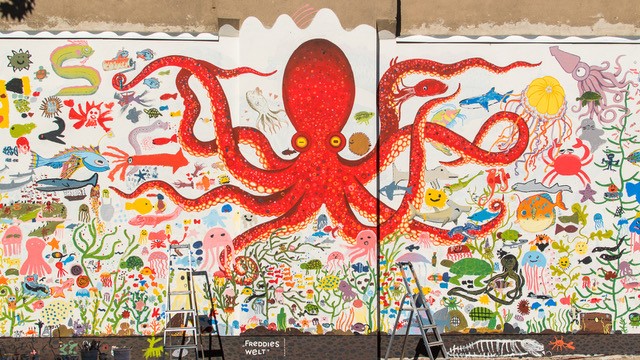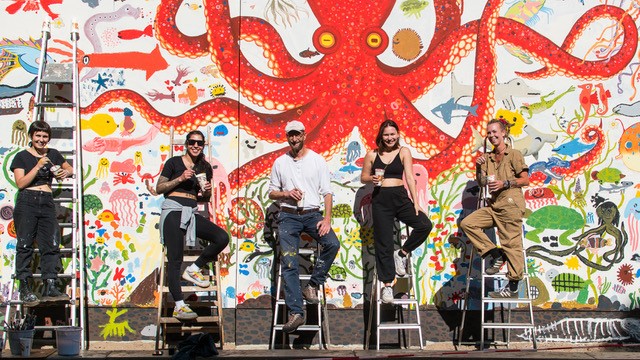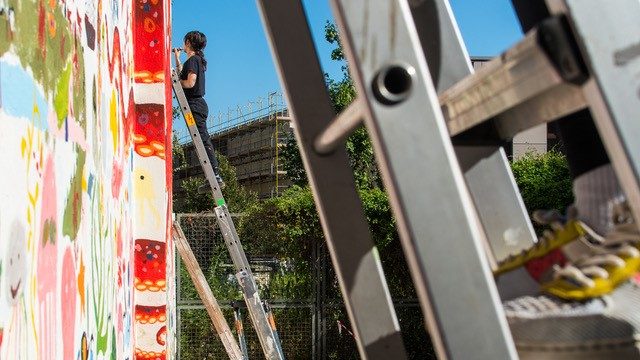
A recent art and design project at UE Berlin has brought together students, local illustrators, and schoolchildren in a vibrant display of creativity and collaboration. The initiative, led by Prof. Hans Baltzer, Head of the Illustration Department at UE Berlin, aimed to transform a blank wall into a striking, colorful mural, involving both professional artists and young students in the process.
Over five days, a dedicated team—comprising Berlin-based artist Judith Drews and illustration students Margherita Pilate and Paula Muñoz Gómez from UE, and Liza Shaub from AID Berlin—worked with 50 schoolchildren to design and create a 60-square-meter mural in a Berlin schoolyard. This project was not just about producing a visually impressive piece of art; it also sought to build a sense of community and inspire creativity in the children.
By allowing the young participants to express their ideas freely, the project fostered an environment where the children took an active role in designing their school surroundings. The children were encouraged to work in pairs and groups, enhancing their ability to collaborate and make joint decisions, skills that are essential in many aspects of life. As they brainstormed, painted, and refined their work, they learned the value of teamwork, shared ownership, and the power of visual storytelling.
The mural now brightens the schoolyard, serving as a reminder of the creative process that brought it to life. The colorful scenes and designs reflect not only the imagination of the children but also the collaborative spirit that drove the project forward. The participants experienced first-hand the impact that art can have on their environment, transforming an otherwise ordinary space into a place filled with meaning and personal connection.
This initiative stands as a model of how art and design can engage communities, especially when young people are involved in shaping the spaces around them. The project had a positive social impact, providing the children with more than just an opportunity to paint; it also gave them the confidence to express their ideas and the chance to see their efforts reflected in a public space.
The project received significant support from the local paint manufacturer STO, which provided the materials necessary to bring the children’s visions to life. The Berlin Senate also played a crucial role in backing the initiative, ensuring that the mural will remain a permanent feature of the schoolyard, celebrating the students’ creativity for years to come.



In conclusion, this collaborative project exemplifies how educational institutions like UE can connect students, artists, and local communities through meaningful creative efforts. It demonstrates how art can go beyond aesthetics to foster community engagement, personal development, and long-lasting contributions to shared spaces. The mural, a testament to collective creativity and artistic expression, now stands as a colorful symbol of what can be achieved when people come together to create something beautiful for their community.